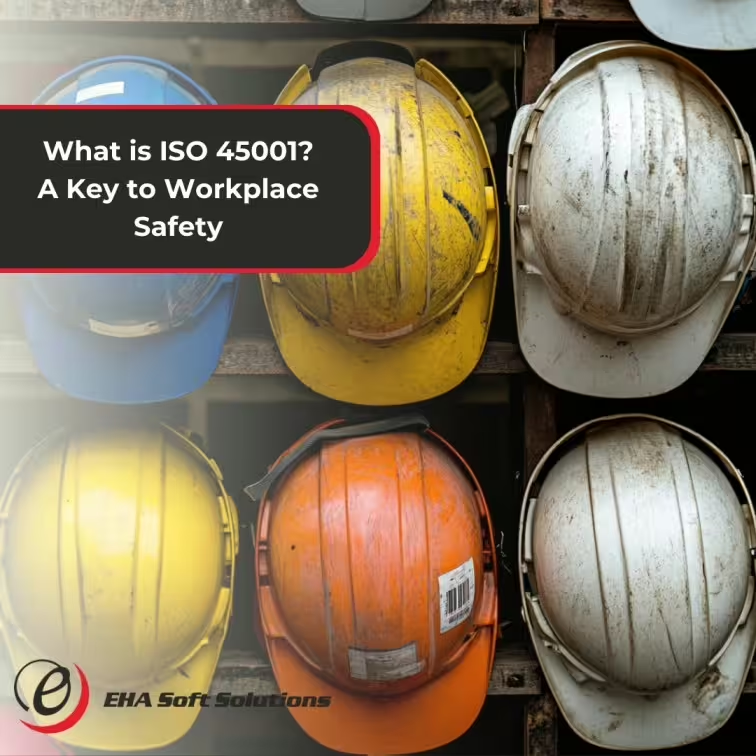Subtotal $0.00

In today’s rapidly evolving business landscape, ensuring the safety and well-being of employees has become a paramount concern for organizations worldwide. With workplace accidents leading to significant financial losses and human suffering, it is essential to implement robust frameworks that prioritize Occupational Health and Safety (OH&S). One such framework is ISO 45001, an internationally recognized standard that provides a structured approach to managing safety health and environmental management in the workplace. This blog delves into the intricacies of ISO 45001, its key benefits, and its implementation, demonstrating how it can transform your organization’s safety culture.
Understanding ISO 45001
ISO 45001 is the first international standard focused specifically on occupational health and safety management systems (OHSMS). Published in March 2018 by the International Organization for Standardization (ISO), it replaces the OHSAS 18001 standard, offering a more integrated approach to managing safety and health at work. The primary aim of ISO 45001 is to reduce workplace injuries and illnesses, enhance employee well-being, and create a safe and healthy work environment.
The Core Principles of ISO 45001
At its core, ISO 45001 promotes a proactive approach to risk management and emphasizes the importance of continuous improvement. Here are the essential principles that underpin the standard:
- Leadership and Worker Participation: Strong leadership commitment is critical for fostering a culture of safety. Engaging employees at all levels ensures that safety concerns are identified and addressed collaboratively.
- Risk Assessment and Management: ISO 45001 emphasizes the need to identify hazards, assess risks, and implement measures to mitigate them. This proactive approach helps prevent accidents before they occur.
- Integration with Other Management Systems: The standard encourages organizations to integrate OH&S management with other management systems (such as quality or environmental management), promoting a holistic approach to organizational excellence.
- Continuous Improvement: ISO 45001 advocates for ongoing monitoring, measurement, and review of the OHSMS to ensure its effectiveness and adapt to changing circumstances.
- Compliance with Legal and Other Requirements: Organizations must remain compliant with local and international laws, ensuring that their health and safety practices meet regulatory standards.
Key Benefits of ISO 45001
Implementing ISO 45001 brings numerous advantages to organizations, regardless of their size or industry. Here are some of the most notable benefits:
1. Proactive Risk Prevention
One of the standout features of ISO 45001 is its focus on proactive risk prevention. By anticipating potential hazards and implementing preventive measures, organizations can significantly reduce the likelihood of workplace accidents and health issues. This shift from reactive to proactive safety management fosters a safer work environment, ultimately benefiting both employees and employers.
2. Applicability Across Industries
ISO 45001 is designed to be applicable across various sectors, making it a versatile solution for businesses of all types. Whether you are a small startup or a large multinational corporation, ISO 45001 can be tailored to fit your specific needs. This flexibility allows organizations to maintain high safety standards while complying with both local and international regulations.
3. Enhanced Employee Well-being
Employee well-being is a critical aspect of any effective workplace health and safety strategy. ISO 45001 promotes the integration of worker wellness programs that address not only physical safety but also mental health. By prioritizing employee well-being, organizations can improve morale, reduce absenteeism, and enhance productivity.
4. Improved Reputation and Competitive Advantage
Achieving ISO 45001 certification signals to stakeholders that an organization is committed to maintaining a safe and healthy work environment. This commitment can enhance an organization’s reputation, making it more attractive to potential employees, clients, and partners. Additionally, companies with ISO 45001 certification may gain a competitive advantage in their industry by showcasing their dedication to workplace safety.
5. Legal Compliance and Reduced Liability
Non-compliance with health and safety regulations can lead to severe consequences, including legal penalties and reputational damage. ISO 45001 helps organizations stay compliant with applicable laws and regulations, reducing the risk of costly fines and legal issues. By implementing a safety management system aligned with ISO 45001, businesses can demonstrate their commitment to legal compliance and minimize liability.
Implementing ISO 45001 in Your Organization
Transitioning to an ISO 45001 safety management system requires careful planning and execution. Here are the essential steps to implement ISO 45001 effectively:
Step 1: Obtain Management Commitment
The success of ISO 45001 implementation hinges on strong commitment from top management. Leaders should demonstrate their dedication to occupational health and safety by allocating resources, setting clear goals, and fostering a culture of safety throughout the organization.
Step 2: Conduct a Gap Analysis
Before implementing ISO 45001, conduct a gap analysis to assess your current OHSMS against the standard’s requirements. Identify areas for improvement and develop an action plan to address any gaps.
Step 3: Develop an OHS Policy
Create a comprehensive occupational health and safety policy that outlines your organization’s commitment to providing a safe workplace. This policy should align with the overall business strategy and reflect the organization’s values regarding safety and employee well-being.
Step 4: Identify Hazards and Assess Risks
Conduct thorough risk assessments to identify potential hazards in the workplace. Engage employees in this process to gain insights into their experiences and concerns. Once hazards are identified, prioritize them based on their potential impact and likelihood, and develop strategies to mitigate the associated risks.
Step 5: Establish Objectives and Targets
Set clear objectives and targets for your OHSMS that align with the ISO 45001 requirements. These objectives should be measurable and achievable, enabling your organization to track progress and demonstrate continuous improvement.
Step 6: Implement Training and Awareness Programs
Employee training and awareness are crucial for the successful implementation of ISO 45001. Develop training programs that educate employees about safety practices, hazard recognition, and emergency procedures. Encourage open communication about safety concerns and promote a culture of shared responsibility.
Step 7: Monitor and Review Performance
Regularly monitor and evaluate the performance of your OHSMS to ensure its effectiveness. Use key performance indicators (KPIs) to measure progress against objectives, and conduct regular audits to identify areas for improvement. Soliciting feedback from employees can also provide valuable insights into the system’s performance.
Step 8: Achieve Certification
Once your organization has implemented ISO 45001 and demonstrated its effectiveness, consider pursuing certification from a recognized certification body. Achieving certification not only validates your commitment to workplace health and safety but also enhances your organization’s credibility in the eyes of stakeholders.
Conclusion
ISO 45001 is a powerful tool for organizations seeking to enhance their ISO 45001 occupational health and safety management systems. By fostering a proactive approach to risk prevention, improving employee well-being, and ensuring compliance with legal requirements, ISO 45001 can significantly transform workplace culture.
As businesses increasingly prioritize workplace health and safety, adopting the ISO 45001 safety management system can serve as a strategic advantage. If your organization is ready to embark on this journey towards a safer workplace, contact EHA Soft Solutions. Our expertise can guide you through the implementation process, ensuring that your organization meets ISO 45001 standards and builds a resilient safety culture for the future.







Comments are closed